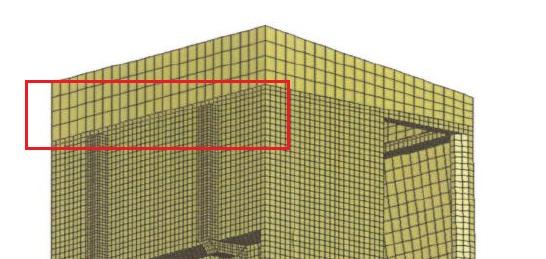Hi all,
I would like to make fine mesh in the critical area of the model and coarse mesh in general areas. I have seen one model how this was done using method I would like to get to know- see the attached figure.
It seems that on the shared edge 2 surfaces are connected but with each second node unconnected. Does anyone know how to do this? It is important that 2 surfaces remains connected.
I have read about mesh transition techniques in Hyperworks Student Guide but it does not say anything about this method.
Thanks.
<?xml version="1.0" encoding="UTF-8"?>